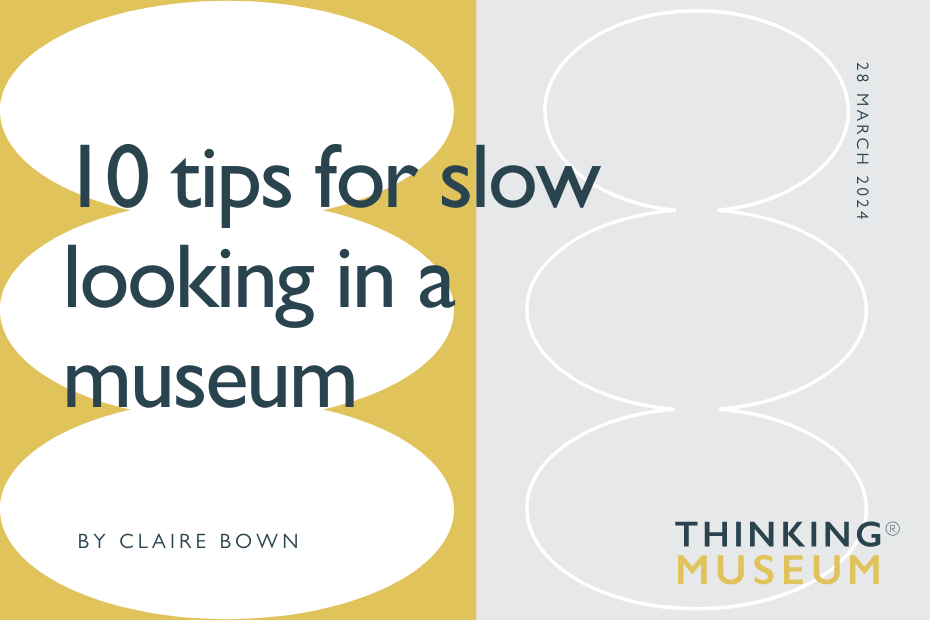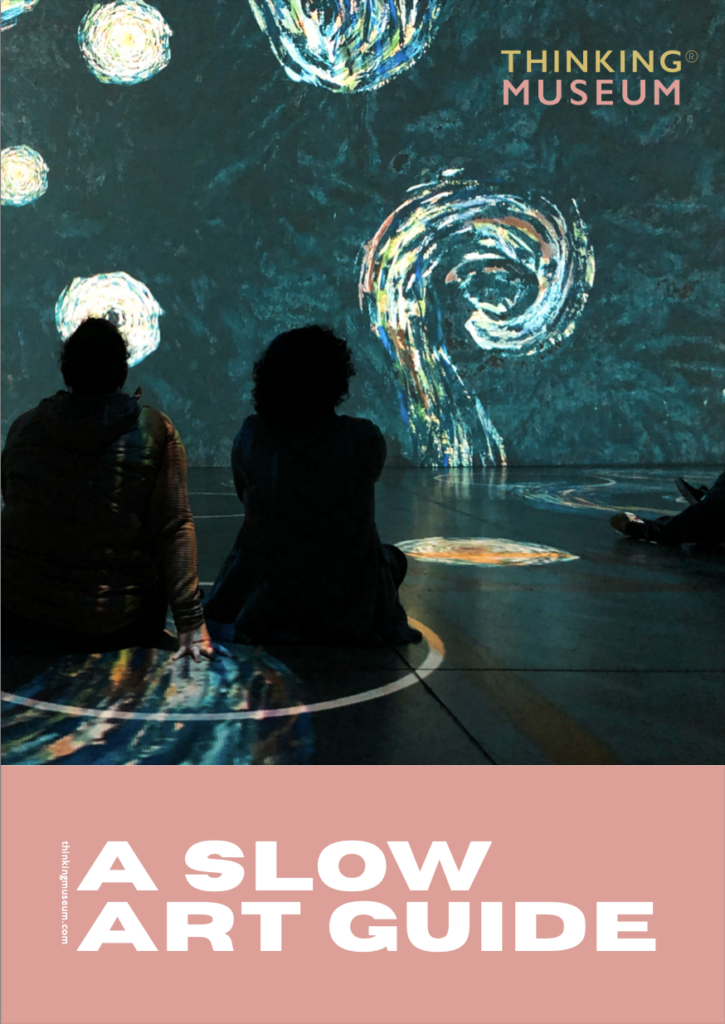Interested in Slow Art Day, but not sure how to get started? Or perhaps you’re keen to try slow looking in a museum, but are a little unsure about the process?
Looking at art slowly can be a really rewarding experience, but for many, knowing where to begin is daunting.
Don’t worry, here are a few practical pointers to help ease you into the experience and get started with slow looking:
Here are 10 quick tips for slow looking in a museum:
1. Choose quiet times: Selecting the right time to visit can really enhance your experience of exploring art slowly. Visit during off-peak hours to explore galleries with fewer people. Try first thing in the morning or late afternoon.
2. Go off-piste: Instead of sticking to the well-trodden routes and popular spaces, dare to go off-piste and explore quieter, less frequented galleries. Focus on the less well-known and quiet galleries – you can find slow looking treasures there! With fewer people around, you’ll have the luxury of time and space to engage in slow looking without distractions.
3. Less is more: Rather than trying to see everything at once, it’s beneficial to be selective. Decide on viewing less – choose one gallery to see in detail or pick just 3-4 objects. This approach allows you to spend more time with each piece, really immersing yourself in its details.
4. You don’t have to spend hours in a museum: Contrary to popular belief, engaging with art doesn’t have to take up your entire day. Even if you only have a short break you can still enjoy a slow looking experience. Take a few minutes during your lunch break to focus on just a couple of artworks. If time is really tight, don’t worry! Just set a time and spend a few minutes with one piece—it’s still worth it and you’ll still reap all the benefits of slow looking.
5. Deep Dive: When you’re visiting a museum, especially during a holiday or busy day, it’s easy to feel the pressure to see everything. But instead of rushing around, try something different. Pick just one object or artwork to focus on for a longer look. Take your time with it—spend at least 5, 10, or even 15 minutes really looking at it. Notice the colours, textures, and details. Think about what questions you have. You could even set a timer and challenge yourself to see how long you can look at the piece.
6. Take advantage of any discount cards or museum memberships. Visiting museums can be a wonderful experience, but not every museum is free to enter. Luckily, there are ways to make your slow looking experiences more affordable and enjoyable.
If you have a favourite museum or if you plan to visit a particular museum frequently, consider getting a discount card or a museum membership. These cards often allow you to pay for admission up-front at a discounted rate. This means you can save money on each visit, especially if the museum charges admission fees. It may also give you priority time-slots.
7. Use props: To extend viewing time and deepen your engagement, consider incorporating props that will facilitate a more immersive experience. For instance, if you’re visiting solo, try donning headphones and playing music while you look at your chosen artwork. How does the music affect what you’re seeing? Does it help you to look longer when you’re listening to music? Alternatively, bring along a sketchbook and pencils to sketch the artwork or jot down visual impressions or take a notepad and write down what you notice and what questions you have.
8. Engage children with simple open questions, notepads and viewfinders: If you’re visiting with children, take small notepads and little pencils for them to sketch the things they are interested in. Make a viewfinder shape with your hands to view small details. Talk about what you see, what you think the story is and what you are wondering about.
9. Engage with museum staff: Take advantage of the expertise of museum staff, such as Front of House teams, museum guides or educators, to enhance your slow looking experience. Ask questions , seek recommendations (e.g. which artworks or objects are particularly well-suited for slow looking? Where are the quiet spaces in this museum?), or join specialist slow looking programmes to enjoy the experience collectively.
10. Reflect afterwards: Find a quiet corner or café within the museum to pause and think about what you’ve seen. Consider the artworks that resonated with you the most and why. Reflect on your observations, and any insights gained from each piece. What did you notice by spending more time with each artwork? What are you going to take away with you? How will you approach it next time? This reflective practice enhances your overall museum experience by allowing you to digest and appreciate the art on a deeper level.
Download my new Slow Art Guide
SLOW ART GUIDE
Looking to enhance your museum and gallery visits with slow looking, but not sure where to start?
My new Slow Art Guide is here to help!
Whether you’re a seasoned museum-goer or a novice, my user-friendly, two-page Slow Art Guide is designed for everyone.
It offers six simple steps to guide you through the process of slow looking, along with helpful tips for taking your time and fully immersing yourself in the art and objects at museums and galleries.
Take the guide with you on your next visit and use it as a flexible, step-by-step companion to help you observe, reflect & appreciate the details of any artwork or object.
And the best part? You don’t need any prior knowledge about art to benefit from slow looking!
Download it for free via the button below.

